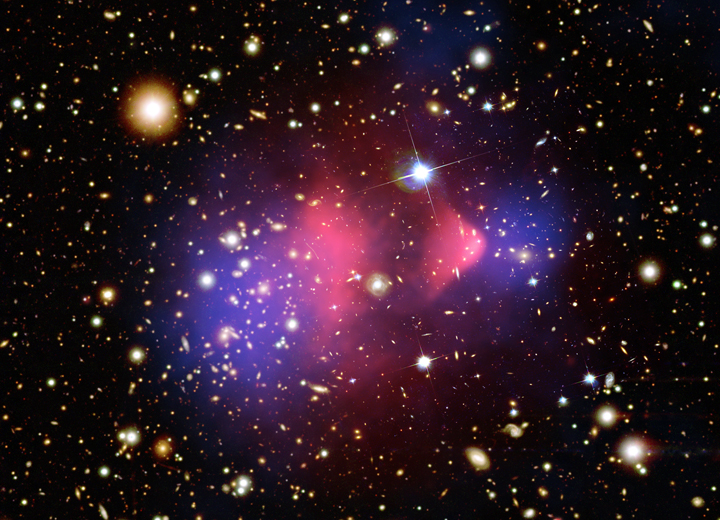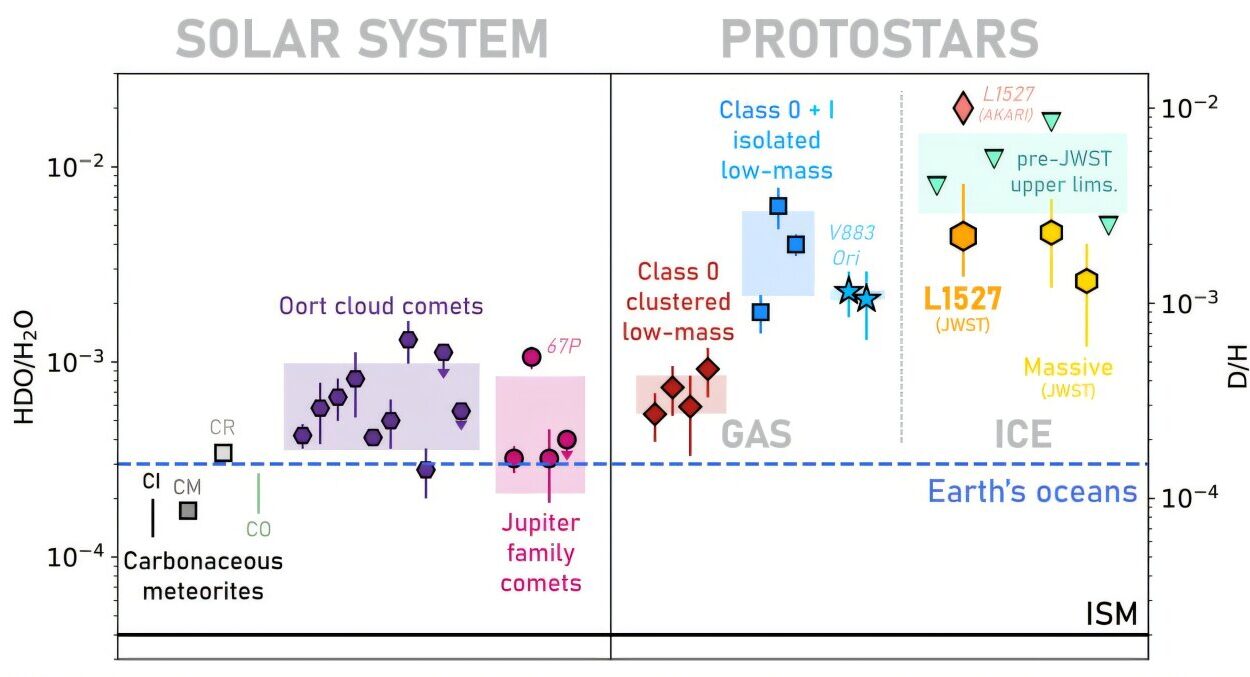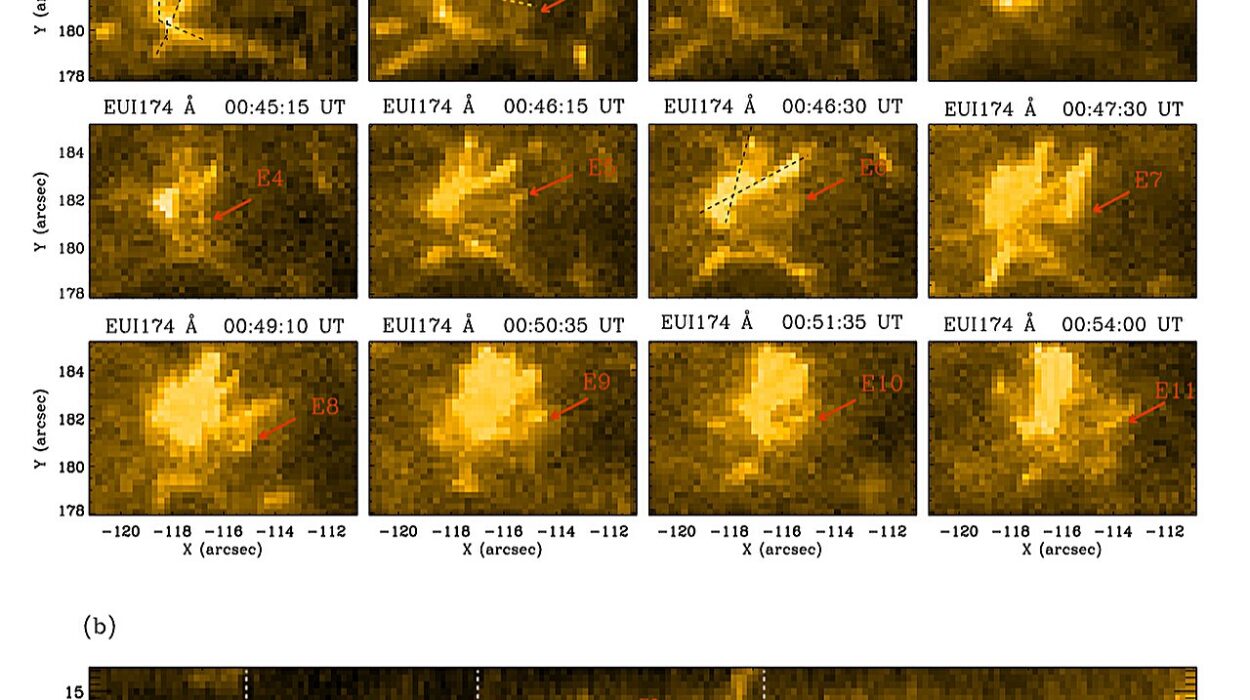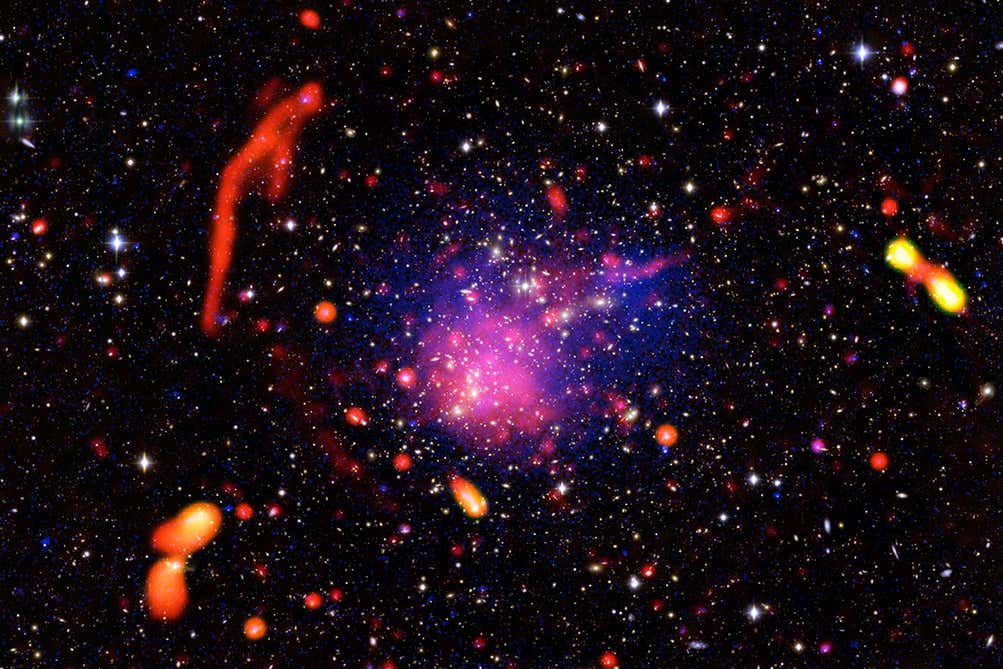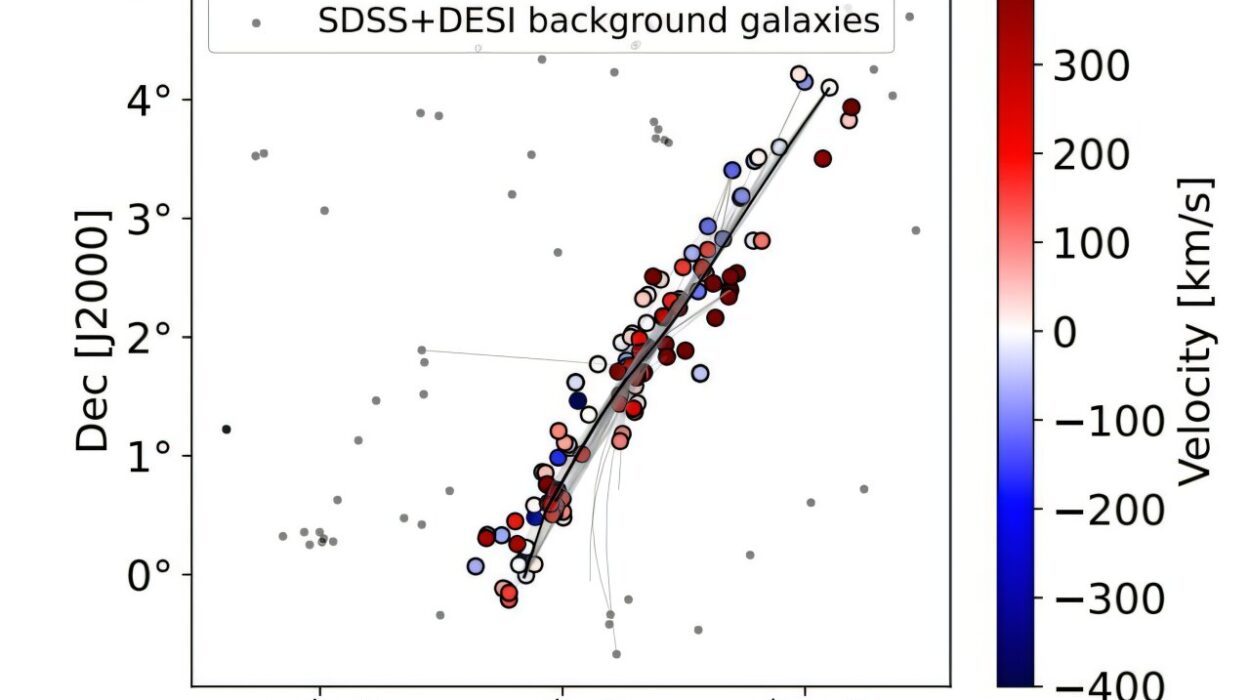Look up at the night sky, and you’ll see stars twinkling like scattered diamonds, galaxies floating like distant islands, and nebulae blooming like cosmic flowers. Yet for all its radiant beauty, the visible universe is just a shimmering veil over a far more mysterious reality. Beneath the surface of what we can see, detect, and touch lies an invisible force that shapes galaxies, bends light, and sculpts the very structure of the cosmos. This unseen entity is dark matter—a strange, elusive substance that makes up most of the universe’s mass but has never been directly observed.
By some estimates, over 85% of the matter in the universe is dark matter. That means everything we’ve ever touched, built, measured, or observed—every planet, star, gas cloud, and human being—is just the tip of the cosmic iceberg. The rest remains cloaked in mystery.
But how do we know it’s there if we can’t see it? What is it made of? Where does it come from? And how does it shape the fate of the universe? These questions have obsessed astronomers and physicists for decades, and though we don’t yet have all the answers, the pursuit of dark matter has transformed our understanding of space, time, and the fundamental nature of reality.
The Origin of the Mystery: Clues from a Spinning Galaxy
The concept of dark matter wasn’t born from wild speculation. It emerged from the cold, precise observations of astronomers trying to understand how galaxies behave.
In the 1930s, Swiss astrophysicist Fritz Zwicky studied the Coma Cluster, a massive group of galaxies located hundreds of millions of light-years away. When he calculated the cluster’s total mass by analyzing the speed of galaxies moving within it, he found a startling discrepancy. The visible matter—the stars and galaxies—didn’t provide enough gravitational pull to hold the cluster together. It should have flown apart. But it didn’t. Something unseen was providing the necessary gravitational glue. Zwicky called this invisible mass “dunkle Materie”, or dark matter.
For decades, his ideas were met with skepticism. But in the 1970s, Vera Rubin and Kent Ford reignited the debate. Using sensitive spectrographs, they measured the rotation speeds of stars in spiral galaxies. According to Newtonian physics, stars farther from a galaxy’s center should orbit more slowly, just as planets far from the Sun, like Neptune, move slower than those close in, like Mercury.
But Rubin found something bizarre: stars at the edges of galaxies were moving just as fast as those near the center. This defied expectations—and suggested that some invisible mass was tugging on those stars, compensating for what the visible mass could not provide.
From that moment, dark matter went from being a fringe idea to a central focus in cosmology.
What Dark Matter Isn’t: Ruling Out the Familiar
To understand dark matter, we must first understand what it is not. It doesn’t emit light. It doesn’t reflect light. It doesn’t interact with electromagnetic radiation at all—which is why it’s dark. But beyond that, it’s also not made of the same stuff as you and me.
All ordinary matter—the kind that makes up atoms, people, planets, and stars—is made of baryons: protons, neutrons, and electrons. But dark matter doesn’t behave like baryonic matter. It doesn’t clump into stars or radiate heat. It doesn’t absorb or scatter photons.
This means that dark matter isn’t just hard to see—it’s invisible to every form of light across the electromagnetic spectrum. Telescopes tuned to infrared, radio, X-ray, or gamma rays all come up empty when trying to detect it.
Could dark matter be made of dark clouds of ordinary matter, like rogue planets, black holes, or brown dwarfs? For a while, this idea was seriously considered. These hypothetical objects were dubbed MACHOs (Massive Compact Halo Objects). But detailed sky surveys using gravitational lensing and other techniques have largely ruled out MACHOs as the main component of dark matter.
So what’s left? If it’s not normal matter hiding in the shadows, perhaps it’s something entirely different—a new form of matter, unlike anything in the Standard Model of particle physics.
The Leading Contenders: WIMPs, Axions, and Sterile Neutrinos
Over the past several decades, theorists have proposed a variety of exotic particles as candidates for dark matter. The most studied—and perhaps most romanticized—are WIMPs, or Weakly Interacting Massive Particles.
WIMPs would be heavy, stable particles that interact through gravity and the weak nuclear force—but not through electromagnetism or the strong nuclear force. This would explain their ghostly nature: they’d pass through ordinary matter without a trace, like a shadow through glass.
WIMPs fit neatly into many extensions of the Standard Model, such as supersymmetry, and would have been produced in large quantities during the early moments of the Big Bang. Their predicted abundance matches the observed density of dark matter—a compelling coincidence dubbed the WIMP miracle.
But there’s a problem. For decades, scientists have tried to detect WIMPs in underground detectors, like the LUX and XENON experiments. These detectors are buried deep beneath Earth’s surface to shield them from cosmic rays, and they’re filled with ultra-pure liquids like xenon that would theoretically produce a tiny flash of light if struck by a passing WIMP. Yet, so far, no WIMPs have been found.
This has led researchers to consider other candidates. Axions, for example, are hypothetical particles originally proposed to solve a different problem in quantum physics. Unlike WIMPs, axions would be extremely light, with nearly no mass—but they could still exist in such vast numbers that their total mass adds up to the universe’s missing matter. Experiments like ADMX (Axion Dark Matter Experiment) are hunting for these elusive particles by looking for subtle effects on electromagnetic fields.
Then there are sterile neutrinos, a hypothetical type of neutrino that doesn’t interact via any of the known forces except gravity. Neutrinos are already famously elusive, with trillions passing through your body every second without any effect. But sterile neutrinos would be even more ghost-like, making them very difficult to detect.
Cosmic Cartography: Mapping Dark Matter Through Gravity
If we can’t see dark matter, how do we study it? The answer lies in gravity. Even though dark matter doesn’t emit or absorb light, it still has mass—and therefore, it exerts gravitational force. By measuring its gravitational effects on visible matter, astronomers can map its distribution.
One of the most powerful tools in this cosmic cartography is gravitational lensing, a phenomenon predicted by Einstein’s general theory of relativity. When light from a distant galaxy passes near a massive object, such as a galaxy cluster, the object’s gravity bends the light’s path—much like a glass lens bends light. This effect can magnify and distort the images of background galaxies.
By analyzing these distortions, scientists can determine the distribution of mass causing the lensing, including the invisible dark matter. The resulting “dark matter maps” reveal a cosmic scaffolding that threads the universe—a vast network of dark filaments connecting galaxies and clusters like strands in a spider web.
Another key method involves measuring the cosmic microwave background (CMB)—the afterglow of the Big Bang. Tiny fluctuations in the temperature of the CMB contain fingerprints of the universe’s early composition. Data from satellites like WMAP and Planck have shown that roughly 26% of the universe’s energy-mass content is dark matter, while only about 5% is ordinary matter. The rest? It’s even stranger: dark energy, which we’ll briefly touch on later.
Galactic Formation and the Cosmic Web
Dark matter isn’t just floating aimlessly through space. It plays a foundational role in the formation of galaxies and the large-scale structure of the universe. Without dark matter, the universe might look utterly different.
In the early universe, after the Big Bang, matter was spread relatively evenly, with tiny quantum fluctuations. Over time, dark matter clumped under its own gravity, forming massive halos. These halos served as gravitational wells that attracted ordinary matter, leading to the formation of stars, galaxies, and clusters.
Simulations of the universe’s evolution—such as the Millennium Simulation and IllustrisTNG—show that without dark matter, galaxies wouldn’t form properly. The filaments and voids we observe in the cosmic web wouldn’t exist. Dark matter acts as the skeleton of the universe, with galaxies forming along its threads like dew on a spider’s web.
Even today, galaxies like the Milky Way are embedded in massive dark matter halos, far larger than the galaxies themselves. These halos extend hundreds of thousands of light-years beyond the visible stars, and they dictate the motion of stars, satellite galaxies, and interstellar gas.
Alternative Theories: Is Dark Matter Even Real?
Despite overwhelming evidence for something like dark matter, not everyone agrees that it’s a new form of matter. Some scientists believe the mystery could be explained by modifying our understanding of gravity.
One such theory is MOND—Modified Newtonian Dynamics. Proposed by Mordehai Milgrom in the 1980s, MOND suggests that at very low accelerations (such as at the outskirts of galaxies), gravity behaves differently than Newton predicted. This modification could explain the flat rotation curves of galaxies without invoking dark matter.
Other theories, such as TeVeS (Tensor-Vector-Scalar gravity) and emergent gravity, attempt to generalize or replace Einstein’s relativity to account for cosmic anomalies.
These ideas are bold and creative, and they highlight the importance of questioning assumptions. But so far, no alternative gravity theory has successfully explained all the phenomena attributed to dark matter—including gravitational lensing, the CMB, galaxy clusters, and structure formation—without invoking unseen mass.
Searching for the Invisible: Current and Future Experiments
The quest to detect dark matter continues with ever more sophisticated tools. Deep underground labs in Italy, the U.S., and China are using massive tanks of liquid xenon, argon, or other noble gases in the hopes of catching rare interactions between dark matter particles and atomic nuclei.
In space, the Fermi Gamma-ray Space Telescope scans the center of the Milky Way, searching for gamma rays that could result from dark matter particles annihilating each other. Meanwhile, the Large Hadron Collider (LHC) smashes protons at nearly light speed, probing for signs of exotic particles that might match dark matter candidates.
Looking ahead, the James Webb Space Telescope and Vera Rubin Observatory will provide new data on galaxy formation and gravitational lensing. The Euclid mission (ESA) and Nancy Grace Roman Space Telescope (NASA) will survey billions of galaxies to map the influence of dark matter on cosmic expansion.
The hope is that these experiments, individually or together, will finally give us a glimpse into the invisible.
Dark Matter and Dark Energy: Cosmic Siblings?
It’s worth mentioning that dark matter is not alone in the realm of cosmic mysteries. In 1998, astronomers discovered that the universe’s expansion is accelerating—a phenomenon attributed to something called dark energy. Together, dark energy and dark matter make up about 95% of the universe.
Though their names are similar, dark matter and dark energy are fundamentally different. Dark matter pulls—it clumps and forms structures through gravity. Dark energy pushes—it drives the universe apart. Yet both are invisible and poorly understood, suggesting we might be missing something profound about the nature of reality.
Some theories even propose a connection: that dark matter and dark energy might be two manifestations of a deeper, unified force—perhaps related to extra dimensions, vacuum energy, or even quantum information.
Conclusion: A Universe Yet to Be Illuminated
Dark matter is one of the greatest scientific enigmas of our time. It shapes galaxies, drives cosmic evolution, and fills the voids between stars. And yet, we cannot see it, touch it, or catch it—not yet.
But that hasn’t stopped scientists from chasing it. The journey to understand dark matter is not just about solving a physics problem. It’s about challenging the limits of human knowledge, pushing the boundaries of what we think is real, and daring to peer into the shadows cast by the stars.
In the years to come, whether through particle detectors, space telescopes, or new theories, we may finally shed light on this cosmic ghost. And when we do, we’ll be rewriting our story—not just of the universe’s origin, but of its ultimate fate.
Until then, the stars continue to shine in a universe that is mostly unseen, mostly unknown—and irresistibly fascinating.
